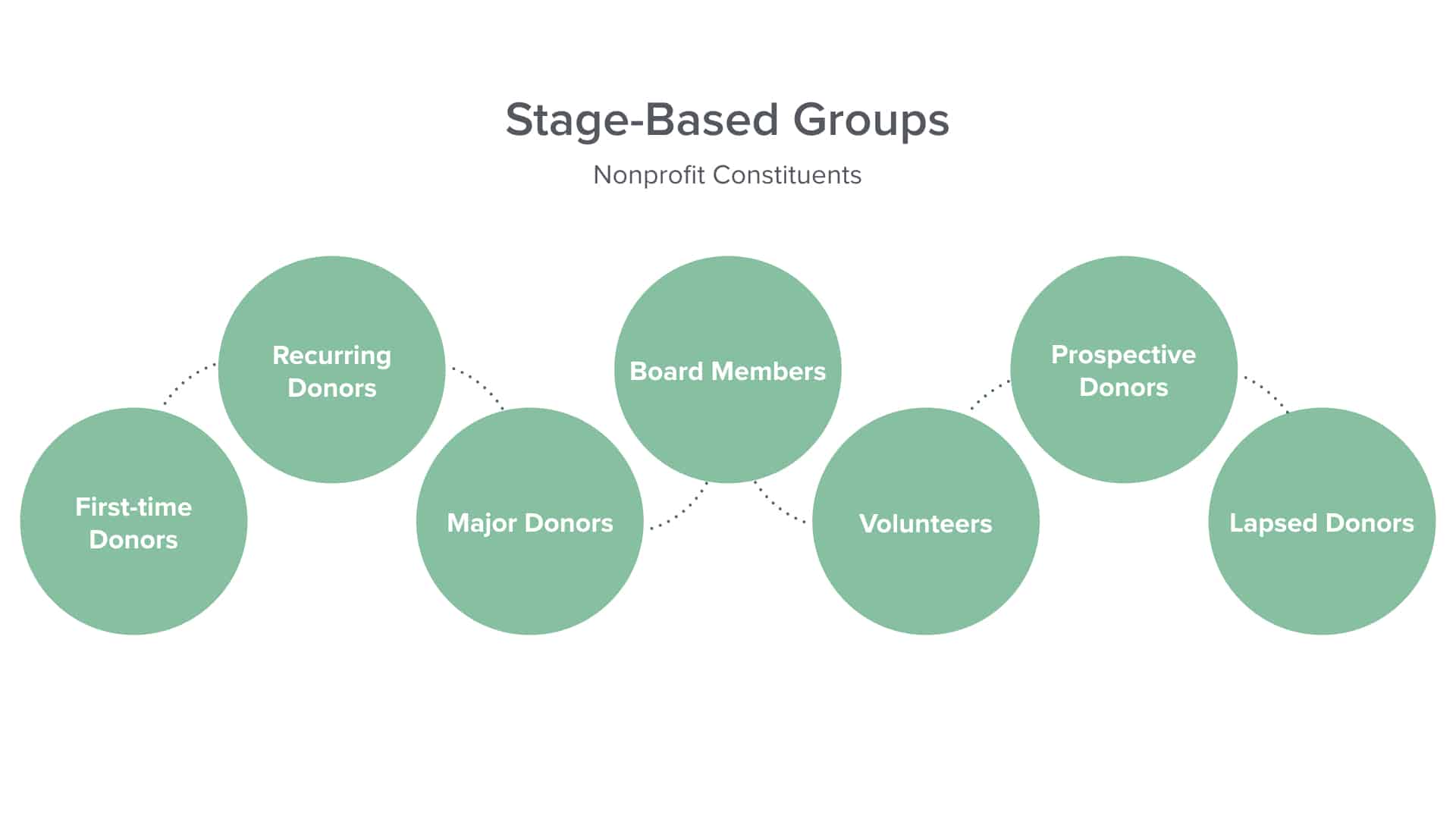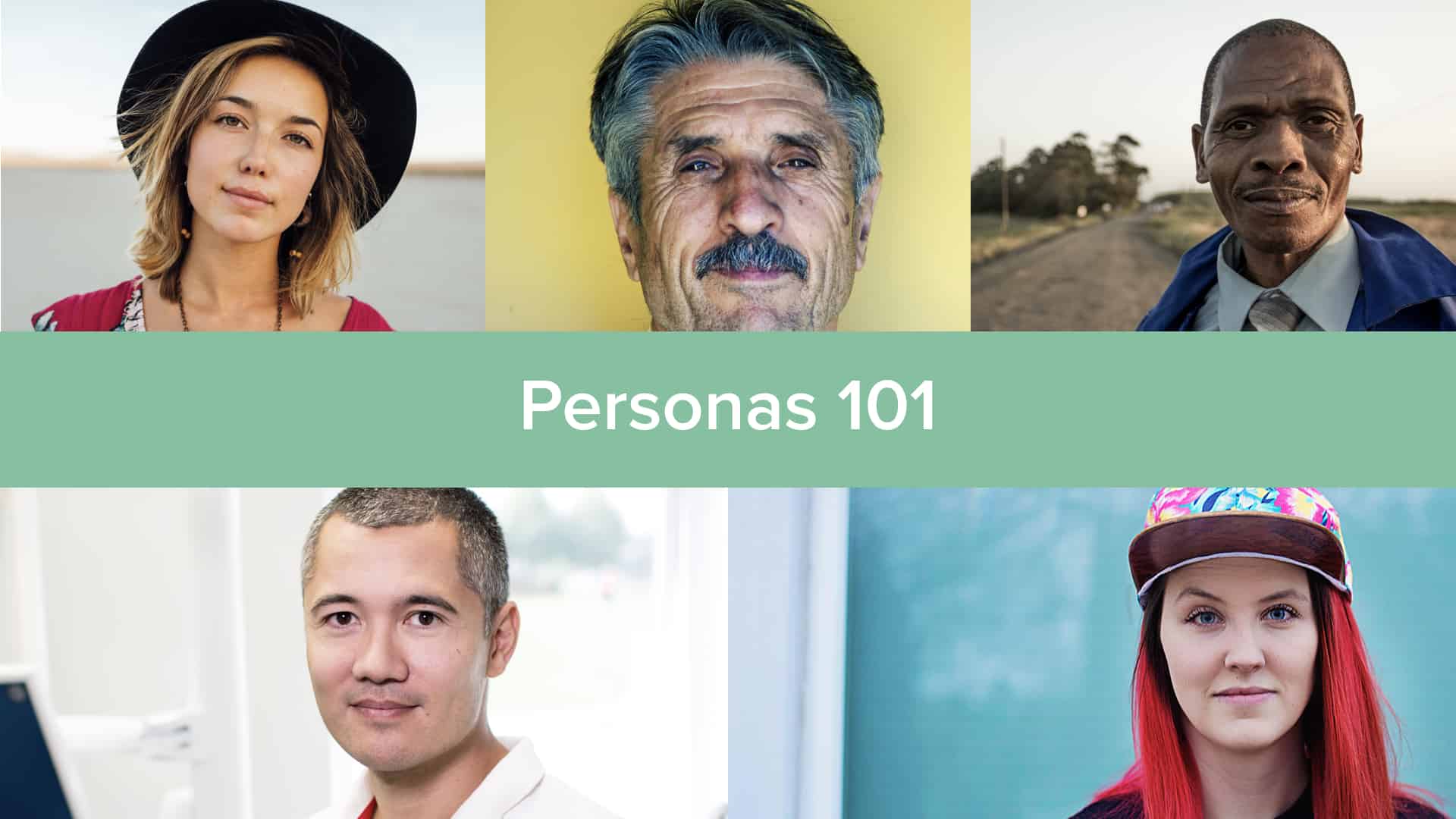Who are you talking to? Persona-Based Marketing for Nonprofits

In part two of this blog series, I wrote about the importance of “selling” engagement opportunities to your constituent base. But the next logical question is: “How do I present the appropriate engagement opportunities to my constituents?”
Before I answer that question, I think it’s important to look at how you may currently be segmenting and talking to your donors. Right now, many of you may be breaking your constituent base into Stage-Based Groups: groups defined by the stage a constituent may be on based on a timeline. For example, your groups could be defined like the following graphic.

You may create a workflow based on communicating to these constituents when they enter a group (e.g. make their first donation). Likewise, you may send out a mass communication to all people who have previously volunteered about an upcoming opportunity. While this is not necessarily wrong to do, I think there’s a better way.
Group constituents based on personas
Hubspot found that “using personas made websites 2-5x more effective and easier to use.” Behavior-targeted ads were twice as effective, and persona-based emails drive 18x more revenue than broadcast emails.

What is a Persona?
A persona is a semi-fictional representation of a constituent type. Based on their relationship with your organization, a persona’s identity is supplemented by real data about how these people get involved.
Each time a constituent engages with us, or we engage with them, there is a treasure trove of data that we can learn about them. By collecting data and investigating its trends, we can develop these semi-fictional representations. This will directly determine how we engage with personas and that persona’s group.
To build personas, we need to ask basic demographic questions to narrow down this category of constituent. Finding out what inspires a certain persona, how they like to engage, how they like to be engaged with, what they are interested in, how they learned about you, and more.
Below are some examples of questions to answer to build out personas.
Download our ultimate guide to Persona-Based Marketing.

For each organization, some questions will be more relevant than others. Take some time to come up with demographic questions that you feel are most valuable. Use the questions above as a starting point, but try to delve even deeper in each category.
From these questions, can you find commonalities in the answers? Can they be grouped? If so, try putting a face and a name to the persona – you may find this to be even more helpful! Once personas are created and defined, now you can begin to understand how to introduce engagement points to a persona group that may be more appropriately aligned with them as an individual.
The last blog post in this series will take a deeper look at why Persona-Based Marketing is essential for you and your organization.
Schedule a live demo with Bloomerang, and we’ll show you how easy it is to create and automate reports, utilize online and offline fundraising tools, quickly integrate and access all your data, and ultimately create more time to engage your donors.